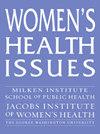盆腔疼痛患者语言及镇痛给药差异。
IF 2.5
2区 医学
Q2 PUBLIC, ENVIRONMENTAL & OCCUPATIONAL HEALTH
引用次数: 0
摘要
目的:已知医患语言失调会影响医疗;然而,患者语言是否与镇痛给药的差异有关还没有得到很好的研究。本研究旨在评估因急性盆腔和腹部疼痛寻求急诊护理的女性患者的主要语言与镇痛给药之间的关系。研究设计:我们进行了一项回顾性队列研究,以评估初诊为腹部或盆腔疼痛的未怀孕成年急诊科(ED)女性患者语言与镇痛药物给药差异之间的关系。主要结局是接受任何镇痛药物。次要结局是接受阿片类药物治疗、接受静脉镇痛以及诊断与接受镇痛之间的关系。结果:817例患者中,427例说英语,390例说其他主要语言。超过一半(53.7%)的患者接受了某种形式的止痛药治疗,其中211人(25.8%)接受了阿片类药物治疗,228人(27.9%)只接受了非阿片类药物治疗。在双变量分析中,以英语和非英语为主要语言的患者是否使用止痛剂没有差异(分别为52.9%和54.6%,p = 0.65)。然而,那些以英语为主要语言的人更有可能接受阿片类镇痛药(53.1%比42.7%,p = 0.038)。在接受至少一种镇痛药的个体中,以英语为主要语言的个体在接受阿片类药物时,调整后的优势比[95%置信区间]为1.49 [1.02,2.20],p = 0.04。与盆腔疼痛患者相比,腹痛患者更有可能接受任何止痛药(55.6%比45.0%,p = 0.049),更有可能接受阿片类止痛药(52.4%比22.1%,p < 0.001)。结论:女性腹部和盆腔疼痛在急诊科可能没有得到充分的治疗,特别是那些英语不是主要语言的患者和那些以盆腔疼痛为主要诊断的患者。本文章由计算机程序翻译,如有差异,请以英文原文为准。
Patient Language and Differences in Administration of Analgesia for Pelvic Pain
Objectives
Patient-provider language discordance is known to impact medical care; however, whether patient language is associated with differences in analgesia administration has not been well studied. This study aimed to evaluate the association between patients’ primary language and analgesia administration among women seeking emergency care for acute pelvic and abdominal pain.
Study Design
We conducted a retrospective cohort study to assess the association between patient language and differences in administration of analgesic medications to non-pregnant adult women presenting to the emergency department (ED) with a primary diagnosis of abdominal or pelvic pain. The primary outcome was the receipt of any analgesic medication. Secondary outcomes were receipt of opioid medications, receipt of intravenous analgesia, and association between diagnosis and receipt of analgesia.
Results
Among 817 patients, 427 spoke English and 390 spoke another primary language. More than half (53.7%) were given some form of pain medication, with 211 (25.8%) receiving an opioid and 228 (27.9%) receiving only non-opioids. On bivariate analysis, there is no difference between whether any analgesic was administered between those with and without English as their primary language (52.9% and 54.6%, respectively, p = .65). However, those who spoke English as a primary language were more likely to receive an opioid analgesic (53.1% vs. 42.7%, p = .038). Among individuals who received at least one analgesic, those with English as a primary language had an adjusted odds ratio [95% confidence interval] of 1.49 [1.02, 2.20], p = .04, for receipt of an opioid when adjusted for highest pain score. Patients with abdominal pain were more likely to receive any analgesic (55.6% vs. 45.0%, p = .049) and more likely to receive opioid pain medication compared with those with pelvic pain (52.4% vs. 22.1%, p < .001).
Conclusions
Abdominal and pelvic pain in women may be undertreated in the ED setting, particularly among those for whom English is not the primary language and those presenting with the primary diagnosis of pelvic pain.
求助全文
通过发布文献求助,成功后即可免费获取论文全文。
去求助
来源期刊

Womens Health Issues
Multiple-
CiteScore
4.50
自引率
6.20%
发文量
97
审稿时长
32 days
期刊介绍:
Women"s Health Issues (WHI) is a peer-reviewed, bimonthly, multidisciplinary journal that publishes research and review manuscripts related to women"s health care and policy. As the official journal of the Jacobs Institute of Women"s Health, it is dedicated to improving the health and health care of all women throughout the lifespan and in diverse communities. The journal seeks to inform health services researchers, health care and public health professionals, social scientists, policymakers, and others concerned with women"s health.
 求助内容:
求助内容: 应助结果提醒方式:
应助结果提醒方式:


